Decorating and Designing A Home For Wheelchair Accessibility
To be honest, the topic of decorating and designing a home for wheelchair accessibility isn’t one that I thought I’d ever be talking about or having to think about. At least not for my home. Not now. Maybe when I’m 80 years old or older, but certainly not now in my 40’s.
And yet, here I am. Wheelchair accessibility is the first thing on my mind each and every time I make a decision regarding my house — where to put walls, where to take walls down, where to put doors, how wide to make doors, how to decorate a room, where to put the furniture, etc. It’s always there in my mind, and it always has to be a consideration. And to be honest, I’m still learning, with Matt’s help and input.
When Matt and I got married, he was perfectly healthy. He wasn’t diagnosed with M.S. until two years later, but even then, his symptoms (mostly occasional dizziness and some balance issues) weren’t severe. It wasn’t until about five years after his diagnosis that he got to the point of requiring a wheelchair for mobility.
That was life-altering, and it didn’t help that we were in a tiny condo at the time. Talk about challenging!
This house has been so good for Matt. He’s able to move around so much more, and much more easily. Not only do we have the space (this house is almost four times bigger than the condo), but I’ve been doing my best to add more and more accessibility as I make changes to each room. The two main areas of consideration are (1) doorway width and (2) any flooring transitions that make wheelchair navigation from one area to another difficult (or impossible).
The standard doorway width for accessibility is 36 inches, but Matt maneuvers through 32-inch doorways perfectly fine. We were fortunate because so many old homes in our area only have 24-inch or 28-inch-wide bathroom doors. Our master bathroom already had a 36-inch door on it, and I widened the hallway bathroom door to 32 inches during the remodel. All of our bedroom doors are 32 inches wide, which is fine with Matt, but I do plan to switch out all of the standard hinges with offset/expandable door hinges.
These add about two additional inches of clearance to doorways. So on a door like our master bedroom, where the door can only open a maximum of 90-degrees, the doorway would have an actual 32 inches of clearance rather than the current 30 inches with the door taking up valuable clearance space. Right now, Matt is able to get through the 32-inch doorways with standard hinges, but he leaves scuff marks and gouges on all of the doors. 😀 That’s not a big deal right now, since we still have all of the old bedroom doors. But as soon as I replace those with new doors, I’d like for him to have room to maneuver through them without scuffing the doors with his metal foot pedals each time.
Flooring transitions are another really big consideration. Remember way back when I was just starting my kitchen remodel, and I popped up all of those asbestos tiles and found wood underneath?
It wasn’t salvageable (i.e., not able to be sanded and refinished), so I considered my options. The easiest option would have been to just put very thin Hardibacker down over the top, and then tile over it. But that would have created a transition at the kitchen doorway with a height difference in the floor. Transitions like that are generally perfectly fine for ambulatory people. In fact, most of us probably wouldn’t even notice it. But for Matt, any height difference in flooring makes maneuverability impossible. So I ended up removing all of this wood, down to the subfloor, and using the same red oak hardwood floor that’s in the rest of the house so that there would be no transition or height difference from the music room to the kitchen.
That alone was one of the main reasons I decided to go ahead and do the full remodel on the hallway bathroom earlier this year, rather than just doing a quick and cheap makeover. The 1/2-inch lip on the bathroom tile at the entrance to the bathroom made that hallway bathroom completely inaccessible to Matt.
And I don’t mean that it just made it challenging. I mean that it was literally impossible. I even tried it myself. One evening after Matt had gone to bed, I got in his wheelchair and tried to get over that 1/2-inch tile lip and into the bathroom. No matter how hard I tried, I couldn’t do it. Those front small wheels on the wheelchair just couldn’t clear that lip.
So I took all of that tile and the thick mortar bed out, down to the subfloor, and then very carefully figured exactly how thick the subfloor, Hardibacker, and tile each needed to be in order to be perfectly flush with the hardwood floor in the hallway.
The wood transition strip and hardwood flooring just outside the bathroom door still need work (which I’ll tackle when I work on the hallway), but it’s all the same height now. After living in this house for 21 months without being able to enter the hallway bathroom, Matt finally has easy access to this bathroom.
Other than doorway widths and flooring transitions, the main consideration is simply keeping main traffic areas through the house wide enough for wheelchair accessibility.
There are so many considerations when designing for accessibility…
If I didn’t need to keep accessibility in mind, I probably would have expanded the hallway bathroom into the hallway some. Our hallway is huge, and generally I would consider it to be wasted space. But for Matt, it’s great! He can easily maneuver from the bedroom to his game room, or from his game room to the bathroom. He loves that wide open space, and when I suggested expanding the bathroom and making the hallway smaller, he hated that idea.
The room that I’m using as a music room was actually intended by the builders to be the dining room. It’s a great location for a dining room, just outside the kitchen, but it’s also a main traffic area to get to the kitchen and breakfast room, and into the sunroom (which will eventually be a family room). Can you imagine how difficult it would be for Matt if I plopped a big ole dining table surrounded by chairs right in the middle of that room? Obviously that wouldn’t work for him, so I needed a purpose for that room that could leave the middle wide open. Sure, it’s basically a glorified hallway with a piano and a couple of chairs in it, but at least it can serve a purpose while also remaining accessible for Matt.
The pantry that I’ll eventually build at the back of the breakfast room will be a huge 12 feet by 8 feet. That seems way too big for a pantry until you factor in accessibility and space for wheelchair maneuverability.
Many people have suggested adding another pony wall and column to separate the entryway from the dining room. That’s not something I would consider doing simply because it would hinder Matt’s maneuverability around the front door. Imagine being in a wheelchair and trying to answer the front door with a wall just to the left of the front door. That just won’t work for him.
Area rugs are another huge consideration. I can’t use rugs in most areas where a rug would naturally go — at the front door or in the entryway, in the bathroom, in the kitchen. I will still use them in areas like a family room, bedroom, and dining room, but I have to be very careful in selecting them. I can’t have anything with a high, thick pile. Flat woven rugs and natural rugs like jute and seagrass are really my only options. (Which, by the way, is perfectly fine for me since those are really the only kinds of rugs I like anyway. 🙂 )
When we eventually turn our current master bedroom into a master bathroom and add on to the back of the house, we’ll need a fully accessible, curb-free shower.
There are so many considerations when you live with someone with special accessibility needs. Like I said, I’m still learning. And really, so is Matt. We’re on this journey together, and as much as he wants me to have everything I’ve ever wanted in this house, I also want it to be fully functional and accessible for him. Beautiful and accessible — that’s the end goal, with lots of learning and trial and error along the way. 🙂
Addicted 2 Decorating is where I share my DIY and decorating journey as I remodel and decorate the 1948 fixer upper that my husband, Matt, and I bought in 2013. Matt has M.S. and is unable to do physical work, so I do the majority of the work on the house by myself. You can learn more about me here.

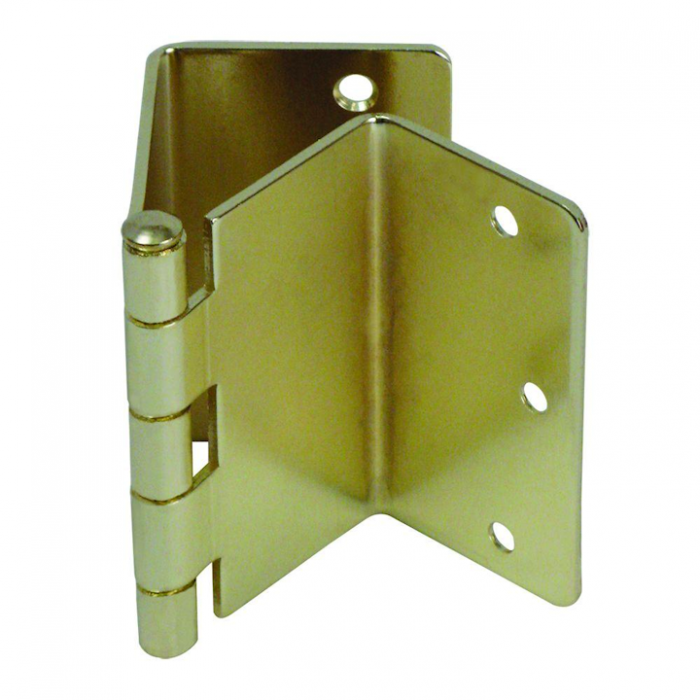
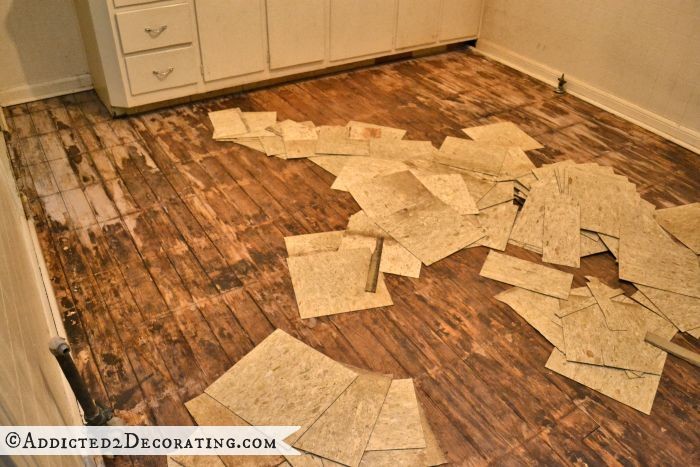
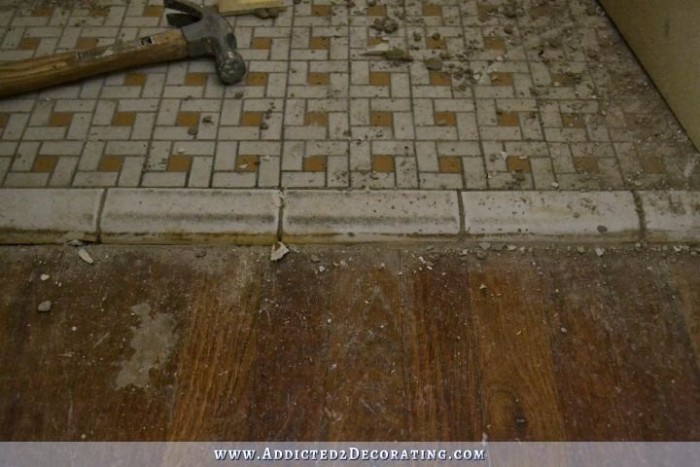
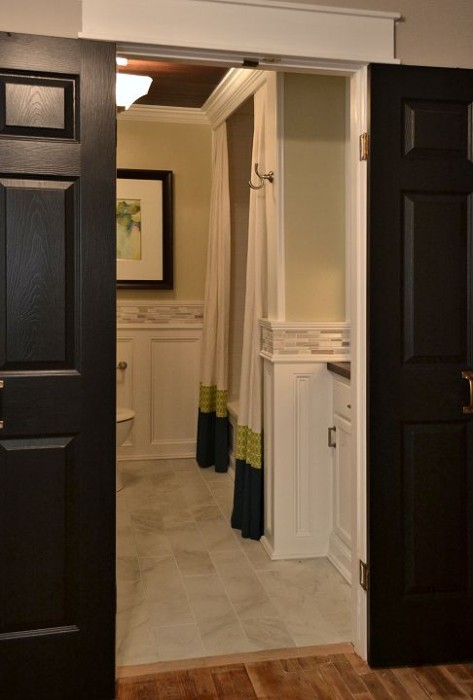
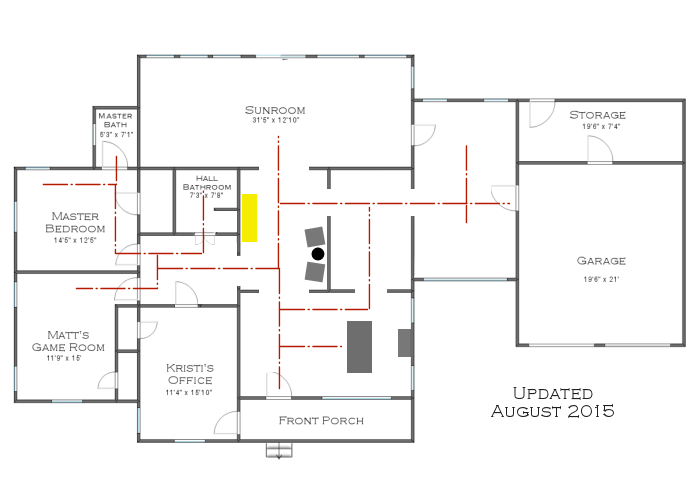

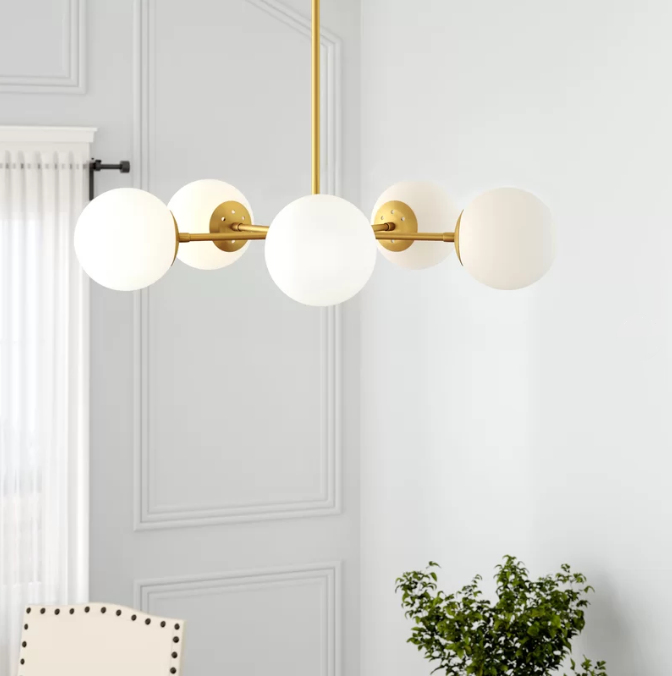
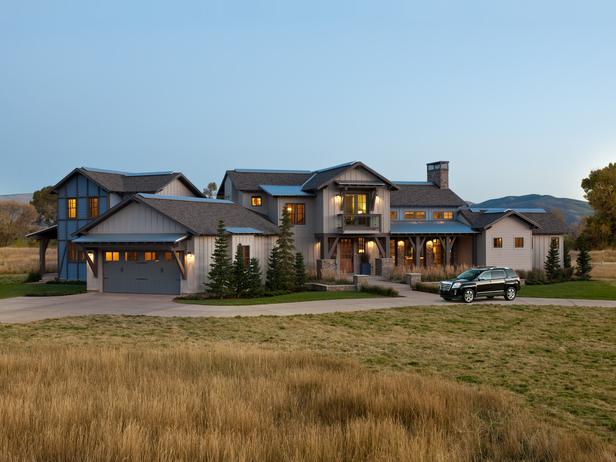

Kristi, you are just one of many, many households who are dealing with an unexpected disability, and need make accommodation. You are so fortunate to have skillz, girl! And you put them to beautiful use! I work for a HUD program, and we invest in housing all the time. We have a policy that homes must have “visitability” features, so that friends with disabilities can visit, even if they don’t live there. That includes accessibility to any ground floor restroom. I love it. Great inclusiveness. None of us have any idea how our lives could change in an instant. This post will help lots of folks, I’m sure.
You and Matt are just so lucky that you are so telented and relentless in making things work, and work right! I’ve been thinking about this issue every now and then when you post new plans, but I would never have thought that a small lip such as the one on the bathroom door would have such an impact… How great that you can tackle this topic and help people with the same issues but not your creativity to work through it! Have a lovely weekend – can’t wait to see the entryway walls next week 🙂
As we look to downsize in a few years, we also are looking for easy accessibility. Both of our moms were in wheelchairs and we remember the first shock of not being able to wheel Mom to the bathroom because the door frame was too narrow. And the hallway as well as the bedroom door frame had gouges from the chair. Thank you for addressing this issue and your solutions.
Hi Kristi! Why not install some kind of door frame guards? After all, no matter how careful Matt is, it only takes one crash to ruin the door.
I would imagine that some sort of soft floor covering (those peel and stick floors you like maybe? never seen those myself) would be good for the job – it only needs to cover a foot at the bottom of the door or so, and I don’t think it would look bad, especially if it’s the same colour as the door frame!
I’m so glad that you addressed this topic. My husband is in a wheel chair as well and I always watch to see how you include accessibility in your designs while maintaining the aesthetic you’re after.
We built a completely accessible house two years ago and had all of the considerations that you mentioned above. We also had to figure in furniture placement. Things like which side of the bed he sleeps on and orienting the bed to have the easiest access to the master bath all factored into the design. We utilized pocket doors on our bathrooms and laundry room.We included roll under sinks and stove into the plans. We also made sure to include as few right angles for him to navigate as possible. For flooring, we went with a durable vinyl plank that looks like hardwood in the main living areas, tile in the bathrooms and a berber carpet with special padding for wheel chairs. My husband still has difficulty rolling on it and we will be replacing it as soon as we can afford to. He has a roll in shower with a curtain instead of a door. All entrances to the house are zero threshold. We also took traffic flow into account when suggesting furniture. For example, we opted for a round dining table rather than a rectangular one so that he could easily utilize the patio door in the dining area. Our pantry is huge as well, so that he has complete access. One of his favorite adaptations is a light switch next to the bed. Trying to navigate back to bed in the dark could be disastrous for him.
We are also extremely pleased that we were able to incorporate all this accessibility while designing a home we think is beautiful. I love watching the progress you are making in your home.
Very good post Kristi. When we bought our home 14 years ago we were not even 50 yet but my husband was having heart problems so we knew we wanted a ranch style home for future easy accessibility to all parts of the home. My husband is doing well these days but ever time we take on a remodeling project we consider the ‘what if’ for future ease of movement. We are currently dealing with elderly parents and their physical needs and it is a challenge with narrow hallways and doorways. No matter your age, you should have some plans in the back of your mind for the future ‘what ifs’.
Thanks for this post, Kristi. You are in a special situation that many others have to deal with, but there isn’t as much guidance in blogland addressing it–beautiful and accessible: your own twist on the idea of form and function.
My uncle was a paraplegic, and I remember as a child when he and my aunt would come to visit, they could never stay with us, as the bathroom doors were only 28 inches (not to mention the hall with the guest bath was too tight to maneuver anyway). He’d always have to stay at a hotel–in an accessible room, of course–and could only stay a few hours at a time at our house before having to drive back to the hotel because he needed the restroom. Additionally there was a front step into the house with a little landing before a step down into the living area that was hard to maneuver with help, and impossible to do alone.
It is difficult (and sometimes impossible) getting around in a wheelchair, but can be done with thoughtful design and planning. I love the home you are creating, and truly appreciate you sharing the thought process for making sure that this home is a comfortable place for Matt as well.
Dear Kristi,
This is such a relavant subject. We were able to buy a house from an estate where the owner was in a wheel chair. It has been a great home! The house had a spanish 70’s feel which is great for wheel chair bound people. they put 4 foot wide spanish arches in the hallway, living room and dining room and a large opening between the kitchen and the dining room. the great room had a den, breakfast room, and u shape kitchen with a four foot wide passage walkway on one side of the room. All entries are 36 inch door level on slab and there were large glass sliders 8 feet wide in great room area and masterbedroom. The best feature is the 4 foot wide hallways on either end of the house.
The master bathroom has a 4 x 6 walk in shower with low lip. We now use our home as a vacation rental and have had many guests who love the walk in shower and low and spacious walkways! Hopefully the future home will have mandatory 4 ft hall ways as it makes so much difference in maneuverability. Keep up the good work.
My comment is not related to your home, but rather to Matt. If I’m stepping out of place here, I apologize and please delete. I wonder if you or Matt have ever read about Dr. Terry Wahls. If I’m not mistaken, she was diagnosed with MS. She has a video (easily accessible on YouTube) that I watched and found super helpful, called Minding Your Mitochondria. I’ve been recently diagnosed with Rheumatoid Arthritis, and have been studying how food affects auto-immune disorders. I’ve made changes to my diet that have helped a lot, and I just thought I’d share her info with you. I realize MS and Rheumatoid Arthritis are different diseases, but I also have come to realize that what we feed our bodies plays such an important role in our overall health and well-being (second only to prayer and a close, personal walk with Jesus, of course!), especially when auto-immune disorders are at play. You might find her videos and/or research helpful, as well. Oh, also, I love your blog and all of your work! You are a blessing!
Oh, yes! We’ve heard of her, and watched her videos. She has some great information! And we definitely believe that diet is key to healing the body from autoimmune disorders. Another great resource is Sarah Ballantyne of The Paleo Mom blog. She’s a PhD and researcher, and her research (along with most new research on autoimmune disorders) shows that all autoimmune diseases, regardless of the specific one you have (there are well over 100 different autoimmune diseases), begins in the gut with something called leaky gut syndrome. Her blog, book, and cookbook are all geared towards explaining how this happens, and providing foods, recipes, and guidance on healing leaky gut syndrome, and in turn, reversing symptoms of autoimmune diseases. When we follow her plan strictly, Matt always sees great improvement.
I love The Paleo Mom! And I love that you and Matt are so informed. I’m still learning, and developing new, healthier eating habits. Which is not always easy! Thanks for the info, and for keeping all of us loyal followers up-to-date on your fabulous home in the making. 🙂
Excellent article Kristi.
Thirty-five years ago my brother was building his first home and I was acting as “consultant”. I stressed that the main entry door to the house should be a 3/6 door (42 inches) and, if possible, all hallways should be at least 42 inches wide. He was having a difficult time justifying the added cost but, he made the changes. When the cabinets, washer and dryer, kitchen appliances, and furniture were delivered he immediately understood that the wider doors and hallways were WELL worth the extra cost. Everyone benefits when using universal design.
I find this post especially meaningful because my father was a paraplegic. He was also an engineer so he designed his last two homes to accommodate his disabilities. I completely agree with your design decisions so far, but I would like to offer a suggestion that might be an added expense. However, it also might become critical in certain instances. I suggest that you put a half bath with a mud room in the pantry area or some area very close to the garage. That little bathroom was very helpful for my father, especially as his disabilities worsened as he aged. My mother found it very helpful also as she aged. The grandchildren used it, and she allowed her yard men access to and they really appreciated her generosity. I hope this idea helps. I am fascinated by your blog and your designs. Carry on, dear Kristi–your readers are applauding you every day!
If we all would build this way
Excellent post, Kristi, and valuable information. Thank you!
Several years ago my husband and I were considering moving from our current home as it needed extensive renovations. We decided to go ahead with the reno using universal design so that we could “age in place” in this house rather than move. The two biggest changes were the removal of our sunken living room floor (which continued to be a tripping hazard for ourselves and guests!) and the gutting of the master bath to make it handicapped accessible. Thirty-six inch wide doors were installed and a zero entry shower was designed plus a new chair-height toilet was put in. If one of us should ever need a walker or wheelchair, the bathroom is ready.
Unsolicited Kudos by you …..to you….!
Great post! It’s nice to see how you are making your home functional, beautiful and accessible to someone with disabilities. My sister-in-law has MS and her big issue with renovating her home to accommodate her future needs is she wants her house to look “normal” and not look like a hospital room or nursing home room. It’s hard to find contractors who can think outside the box on these issues.
We just bought an almost totally accessible one story town home. We are only in our 60’s, but we are planning ahead. 26″ wide doors, 44″ wide halls, and a wall in shower. It costs more and we are getting less square footage, but we are relieved that it will continue to need our needs as we get older…just like you!
Oops! 36″ wide doorways…
I think everyone should consider accessibility when building or remodeling a house. I plan on being in my house for a long time – maybe after I need these changes, so it makes sense to do them as you go. Your house sounds so open and airy with all the space you have created, for everyone not just your husband. I would not be surprised if the value of your home doesn’t reflect the expanded buyers market.
I am so glad that someone is actually talking about this. Found myself in the position of needing a wheelchair after suffering from necrotizing fasciitis (flesh eating disease) and being hospitalized for 4 months with another month of rehab at another medical facility. I couldn’t believe how difficult it has been to manage to get around the house, in and out of doorways, into our bathroom. My beautiful new kitchen has taken a beating, especially around the island, which has suffered many nicks and gouges from the wheelchair. My husband was able to put in a wheelchair accessible entry at the front door, and tried at the back door (but that one turned into a major fail, as there is a major height discrepancy.) between the floor in the back sunroom and the flooring of the deck — no major problem for those without a wheelchair, but it is impossible to navigate with the wheelchair. We had to take off the shower doors on one tub (something we wanted to do anyway) so that we could put in a temporary shower bench. In our ensuite bathroom, I cannot currently use the tub, as it is a jacuzzi, and it is considerably difficult to get in and out of. We would like to renovate the ensuite, but we are finding it difficult to find a tub that is not a stand-alone that is also accessible for this short person. A walk-in tub is just out of the question at this time, as the price is cost prohibitive. I agree that the flooring issue can be a bit of a problem, especially when transitioning between flooring types, and any type of rug is almost non-negotionable . So good to hear from others who are enduring this struggle, and finding solutions. Keep on posting stuff like this! Thanks!
Your point about the kitchen island is a very good one, and one that I had intended to address in my post. Kitchen islands are almost always a bad idea when dealing with accessibility issues unless you have a HUGE kitchen and can allow enough room on all sides of the island for a wheelchair-bound person to easily turn around.
For the record, this is my absolutely favorite post to date. The love you have for Matt and the commitment to your marriage just oozes out like a melted marshmallow in a S’more. Now excuse me – I’m hungry now.
Great post Kristi! In UK the building regulations have been changed several years ago. All new builds have to have an weelchair accessable ground floor. The changes considered the door openings width, the height of light switches and electrical sockets, even some new type of threshold has been invented for the external doors – it is flash with the floor but doesn’t let water in the house.
My partner’s late brother was a wheelchair user. He lived with his parents in an old Edwardian 2 storey house. Fortunately the local autorities here have a policy, and funding, to help in such situations. They installed 2 staircase lifts – one inside, one outside, and built a small extention for a wheelchair accessible wet room. I don’t know what accommodations are in place in USA for such occasions but have you checked whether you and Math are entitled to any help?
I haven’t checked, but it sounds like I should!
Hi. It was interesting to read your post on wheelchair accessibility and i was curious to see if you would mention anything about maneuvering in narrow hallways, but i realize from your floor plan that you do not really have that many hallways. I am living in a semi-detached Brooklyn home, roughly 21’x 65′- Yup! long and NARROW! I have two young children in wheelchairs-power wheelchairs! So when you combine that with ultra-narrow hallways (some less than 3′!) what you get is some REALLY badly bruised hallways, especially since the “drivers” are KIDS who like to go at top speed in their power chairs:)! We painted our entire house around 5 years ago, though it looks more like 105 years ago! We are desperately in need of another paint job but i do not want to pour so much money in if it will be looking awful in 6 months again. We are having a hard time finding ideas that protect the hallway AND also look beautiful. I would really love to have a nice looking home, my yummy, wheelchair-bound kids notwithstanding. Any ideas to make that possible?
p.s. what do you think of faux marble laminate sheets on the lower half of the wall, with a chair rail moulding above it. Someone mentioned that idea to me, and it sounds nice, except that the laminate sheets are only 8′ long, and my hallways are longer than that.
Thank you for taking the time to read this comment.
That’s kind of what I was thinking, although I wasn’t specifically thinking laminate sheets. But there are some great peel-and-stick tiles on the market today, and they’re quite durable. I think doing some sort of design with those and then adding a chair rail on top might be the perfect solution. Using tile on the wall in a hallway isn’t exactly the norm. It’s very much outside-the-box design, but if you’re okay with that, then I say go for it! I personally like design ideas that are different and stray from the norm.
Or some of the vinyl wood-look flooring–you could make it look like a plank wall below a chair rail!
Hi Kristi, I think that having to think about Matt when redesigning your home has pretty much made you a crossover designer. I can’t imagine that there are too may of you out there. I bet AARP as well as other handicap publications would be thrilled to hear your story and possibly feature it in the future. I love the idea of the music room being a blank slate kind of room. I would be great if in the very distant future you would find a great drop leaf table to put between two chairs. We have one that fits through a doorway, but opens up to be really large with the leaves. I see that as an ideal place for a dinner buffet when serving a lot of guests. It is also a great place for a not too tall Christmas tree that Matt does not have to work around, or even a collection of holiday items etc. Then there is always the snapshot table, with photo’s of friends, family etc. I do that in matching frames so as not to look too chaotic. Anyway, back to Matt, it seems as though his disease progressed rapidly. I have a few friends who were diagnosed years ago but are still up and about, God bless them. I just wondered if there was something else going on with Matt’s health that cuased such rapid progression. My son has been in and out of a wheelchair with his ski accident two years ago and is again looking at another surgery in a few weeks that will have him immobile for some time. He was fortunate to have an apartment that worked really well for him. You are doing a great job, just take it slow and easy, remember it was the tortoise that won the race! Blessings.
You are so right about it all. My husband’s mom passed away from that horrible disease. When we finally decided to move back home closer to his family and his brother who also has MS, we have had to talk about how to make our home accessable to both him and his grandparents. My brother in law is fortunately just with a cane right now but the stairs we have could be difficult. Grandpa is in a wheelchair fulltime. It will take longer for us to get it wheelchair ready but we have a plan for all of it. We do have one entrance that doesn’t require a step except from the driveway. We were going to get our hightop table out of storage but a lower, normal height table came into our laps and I explained it would be easier for everyone to sit at it. There is one room that will still be inaccessible because it is an addition and the floor is down a small step, roughly 1.5 inches. The narrowness of the hallway prevents us from being able to put a ramp there since it wouldn’t give a wheelchair enough space to turn. It’s our den anyways and we have a much larger living room to congregate in. I look forward to seeing your house progress.
Kristi, it will all be good in the end. What you’re doing now for Matt will serve you well as you get older. Any change in height from one glooring type to another is disastrous for any senior. You’re not there yet but would you want to (or be able to) make these same changes to keep you safe from tripping when you get to your 60s? I think not!
You’ve made great flooring choices and they’ll serve you well for many years. I’ve just turned 59 and am due to have foot surgery on both feet (not both at the same time. ) As i get each foot done, I’ll be going from a wheelchair to progressively changing casts for each foot over a 3 month period. When I bought this house 2 years ago I had already foreseen problems with the changes in the height of the flooring from room to room but didn’t get busy with fixing that problem. *smacking my head*
You’re way ahead of the game changing things to assist Matt! You’ll be sitting pretty when your own mobility begins to wane! Yeah Kristi!!! You rock!
A dozen yellow roses of Texas for you!
Excellent post and so very relevant for today’s lifestyles…we all need to think of this for the future or even right now. If all builders would think like this we would not have to reconfigure! I wish I had found this some years ago when we were trying to find a home for my mom and sister…she had no problems but then…yes but then life took a terrible turn…I really have learned a lot since then but unfortunately it was too late. You are wise because even if you do not stay in this home it will be ready for someone who needs beauty and handicapped accessibility.
Kristi, you should research the concept and principles of “universal design”. You already are aware of many of the specifics involved, but the principles will be presented in a format to help you plan your home for accessibility to all of us, even as we age and need to access to our homes.
I really enjoy all of your inspiring posts of projects, plans, paint colors…yet the posts about showing how to design for Matt really mean the most to me. I’m under 30 and I’ve battled Lyme disease for more than half my life now, although it went undiagnosed for a decade and was allowed to run rampant causing a lot of long-term problems. In a lot of ways, it resembles MS and is often misdiagnosed as such, so I really have a lot of empathy for you both. I was quite mobile when I married my dear husband 3 years ago, but now I’m using a rollator to get around the house most of the time. Praise the Lord that before I’d ever met my husband, he’d purchased a really spacious ranch house that’s easy to navigate! My mobility is continuing to wane, and I suspect a wheelchair is not far in my future, but it’s all in God’s hands and timing and I’m okay with that. 🙂 It is so helpful to me to watch you working to make your home comfortable to Matt as well as yourself, and your cheery can-do attitude is so encouraging as I look around my home and try to set things in order for if/when the wheelchair day comes.
With the Internet, it’s easy for strangers to ask to break all your bounds of privacy, and I’m afraid that that’s how my inquiry will sound, so I hope this isn’t offensive: Would Matt consider saying hello on your blog? Your love for him is obvious and heartwarming, and he’s a very important but fairly silent part of your home remodel. Reading your blog and seeing what a cool person you are makes it easy to extrapolate that the person you are in love with is also a cool individual. I pray for you both as I read your blog, and sometimes I think it would be nice to have a little bit more of a face or personality in mind as I pray.
Either way, thanks for sharing your journey with us and I continue to read with great interest!
We’ve talked about him writing a guest post or two. I’m sure he would love it! 🙂
Oh yay– I’ll look forward to reading those! I’m sure he has some other fans around here due at least partially to the freedom he gives you with your decorating! 🙂
This summer my son was hit by a car and broke his leg. He was in a cast from the top of his thigh to his toes to immobilize the one leg and a boot for the other. I never realized the challenges that being in a wheelchair can have! Thankfully he’s completely healed but I really have a new found respect for the challenges those relying on a wheelchair on a daily basis face. I couldn’t even get him through the front door the day we brought him home from the hospital because of the threshold. I can’t even fathom the cost if you had to hire someone to come in and make your home wheelchair accessible. I look forward to seeing the next update you complete!
Hey Kristi, What a fantastic post. As a wonderful coincidence (!?), I must tell you that you are the one who inspired me to start a blog designed especially for seniors (but I now realize it could will address issues for anyone with accessibility or physical challenges). I won’t be online until probably end of year (I surely didn’t know there was so much to learn about blogging!), but I wanted to have a place where Seniors (I AM one) could learn how to “live graciously”. Considerations in decorating which need to be made for wheelchairs, walkers, and physical limitations, are not addressed anywhere I could find – especially in a blog. Decorating, dressing, eating, playing, etc.with Style, Dignity, Beauty and Ease. Everything YOU blog about doing in your home and make comments about making it easier for Matt led me to realize all the changes I’ve made in my retirement community cottage to accommodate either myself or my friends. For instance, I can’t have coffee tables in front of a sofa any longer; yet almost every decorating blog has coffee tables with sofas in beautiful photos. Seems so many bloggers are younger moms, and families have different needs than just a couple or singles. When you toss in disabilities, then a home has other needs; yet we all want the ease and comfort of a beautiful home. You are an inspiration with your skills and talents, but i wanted to let you know your’re also an inspiration to an old Granny who is going to become a new Blogger! Rock on, Kristi!
The Wahl’s Protocol – read it! It’s how an MD got her MS under control and got herself back out of her wheelchair. I have no affiliation, just trying to spread the word. Best of luck to you!
My hubby has been in a wheelchair for nearly 40 yes. When we bought this last home (single wde 12X 60). First day I walked in with a saws all and cut out all the door ways and walls in the way. Making our home work for us is what makes it our home . Yes it’s all back together and beautiful and I did it myself
Kristi,
I’m a wheelchair user, so read this post with great interest. As I’ve followed your progress, I’ve always considered your particular choices-of-the-moment with accessibility issues in mind. (I’m the person who was questioning your use of a rug under your dining room table, since I know how that can interfere with getting a wheelchair positioned properly.)
One really obvious accommodation that you didn’t make in your gorgeous hallway bathroom is the installation of
a grab bar to the left of the toilet on the back wall. I realize that every wheelchair user has different issues and “fixes” they use for maneuvering . . . and apparently Matt doesn’t absolutely require one in order to use the bathroom or you would have already put it in, but for safety’s sake, it’s a good idea for most anyone with any kind of balance or strength issue to have one, since in an emergency, it’s there to grab. In my bathroom — which has the same orientation as yours — there’s a long grab bar that I use as a towel rack, so it multi-tasks. 🙂 And if it’s a matter of aesthetics, there are small ones that really don’t look much different than a regular rack. . . .
I’m also kind of surprised that there was no discussion during your bathroom renovation of the possibility of putting in a higher toilet (or maybe there was and it just didn’t make it into your blog writings.) It’s amazing how just a few more inches of elevation can make the difference between someone with leg issues being able to use a toilet or not. . . or use it safely. That’s certainly true for me, especially if there’s no grab bar in the vicinity.
Just wanted to bring these things up — if not for your situation, then for those reading who are new to this whole issue and are investigating some basic and easy adjustments that can be made when they’re planning renovations with an eye toward universal design and aging in place.
Great post and comments!
I didn’t read all the posts so you may or may not know this – when going over bumps with a wheelchair just turn it around and go in big wheels first.
We do that when we need to, but it’s such an inconvenience when you have to do that inside your own home. 🙂 Ideally, one’s home shouldn’t require that much effort to maneuver around in, and sometime small rooms (like the hallway bathroom) don’t have enough room to turn around in once you’re inside, so backing in might get you inside the room, but it doesn’t do much good once you’re inside.
But we do often have to use that method when he’s outside, like on our unpaved driveway that has a big concrete bump at the end of it.
I’m sure Matt knows it already, but many times small bumps like that can be accessible if you turn around and back in….then getting out of the bathroom is simply a down slope which the front wheels do easily.
Another way to fix those when a remodel is impossible or its a while before it will be done, is creating a ramp……yes a 1/2 ramp. When that 1/2 inch makes the difference, you stop laughing and make it start out flat enough to get the little wheels up and then gradually increase the height. Actually can take a foot or two to do….and if it’s a narrow hallway so chair won’t go in straight on, you make it the size of a door mat with that slope…so it starts imperceptible but rises high enough.
Oh the things you learn when even 1/2″ makes a difference.
Good on ya!
A fantastic story! Really enjoyed hearing how you made your home wheelchair accessible.
Kristi,
I loved your blog!
I’m actually an Australian year 12 student studying Design and Technology, it is by far my favourite class as sometime in the future I’d like to pursue a career in Interior Design. For my major project I am actually creating a luxurious house with full accessibility for someone who is in a wheelchair, I’m designing it specifically to a friend who is a paraplegic and I found your blog very helpful with small tips on what works and what doesn’t.
I loved your design taste also, thank you for your help and keep at what you do.
Can’t wait to see more!